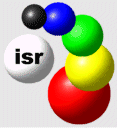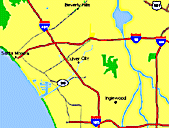| DOS and Win16S/32S
OS layers comprise a commodity operating system - user-extentable, non-proprietary,
communally defined, and shared by a world-wide network of developers without
belonging to anyone. Its services may be extended using Direct
Device Interfaces (DDIs) in order to supply low-cost/high-performance
solutions in global markets for diverse set of products. The relationship
between product categories and DDIs is illustrated by the roadmap shown
below. Product categories include low-cost PCs, web-enabled PCs,
and web appliances. Existing DDIs provide an interface to the graphics,
memory, timer, and video devices. Engineering development is required
to create the remaining software modules to include DDIs to modem and sound
devices, and APIs implementing internet protocol stacks and a GUI. |
Low-Cost PCs
Microsoft's shotgun approach to marketing backwards incompatible operating
systems combined with the relentless integration of features that way overshoot
the needs of most of the market has pushed the cost of PC-ownership through
the roof. User-extendable, commodity operating systems provide an
attractive alternative to bloatware by reducing cost in a number of ways:
-
Resources in a computer system, to include RAM and CPU instruction cycles,
are utilized only to the extent that they are needed to run the application
programs which are present. This tends to reduce the CPU clock speed,
disk space, bandwidth, and the amount of RAM required to achieve a given
utilization factor and corresponding level of system performance.
-
The delivery of code may be broken down into components which are separately
purchased and/or upgraded based on consumer choice. In contrast,
upgrading to an improved version of Windows applications necessitates upgrading
the operating system which, in turn, necessitates upgrading all other applications
as well as the hardware in order to maintain a given level of performance.
-
Applications development benefits from the spirit, attention, and diversity
of a large community of programmers which tends to improve quality and
innovation as well as reduce cost.
Low-cost PCs may be implemented using 486-based PC-on-a-chip technology
in order to satisfy the packaging and cost constraints of Web Appliances.
In order words, low-cost PC and web appliance hardware platforms are identical.
Web-Enabled PCs
Application Solution Providers (ASPs) such as desktop.com
are looking beyond the necessity of bloatware running on expensive computers
to a radical new reality in which computing is cheap, universally distributed,
and readily accessed using low-cost, web-enabled PCs.
Web Appliances
Length and arrival statistics, allowable distribution of delay, and the
importance of correct delivery of information transmitted over the net
require that systems for
delivering web-based services sometimes operate in conjunction with
web-appliances with Real-Time and Embedded (RT&E) capability.
This will be especially true if high-speed internet service does not become
pervasive.
Launch Markets
Specific products for launch markets include:
-
DDIs which expose the functionality of graphics, timer/scheduler, physical
memory, communication, and video data acquisition devices.
-
A hand-held gaming device whereby games downloaded from a Web page are
dynamically linked to DDIs in order to access physical devices.
-
A Visual Programming Tool (VPT)
providing a means to develop software applications from reusable software
components, to include DDIs, by drawing box-and-wire diagrams.
-
Reusable data acquisition, processing, storage, and display components
which may be manipulated using the VPT in order to develop RT&E applications.
Copyright © 2000 by T2
Technologies, Incorporated. All Rights Reserved.
|




